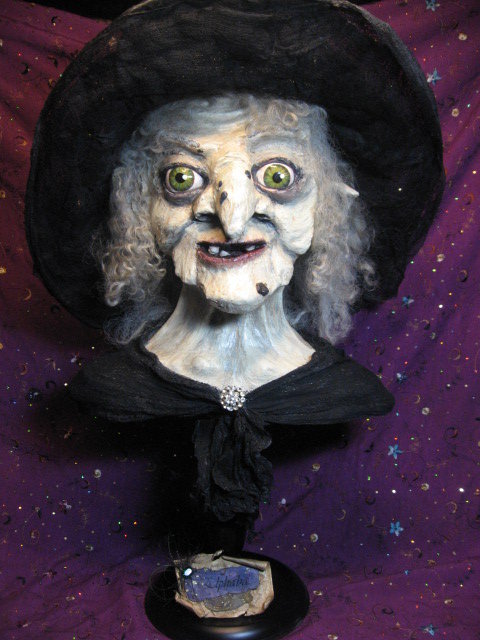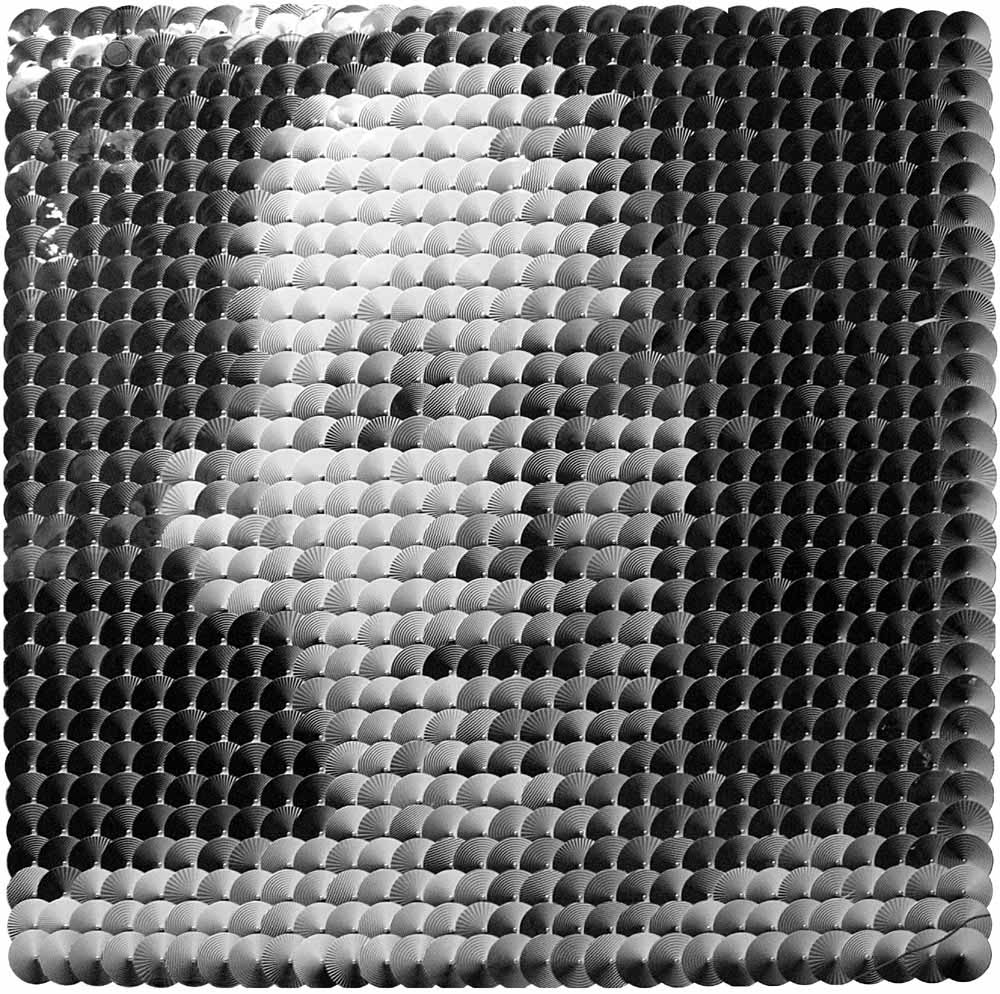Painting:
 Arcimboldo_Vegetables.jpg 1504×2000 pixels
Arcimboldo_Vegetables.jpg 1504×2000 pixels
This painting is "The Greengrocer" by Guiseppe Arcimbolo. The 16th century Italian painter became famous due to his unique portraits which are painted out of items such as vegetables.
Other vegetable art:
There are artists who are specialized in Halloween themes. Jan Pierce is one of them. She painted the following piece.
In combination with electronics, vegetables art does not seem to be that common.
However, interactive objects are not a rarity and that is exactly what I seek to create. Visiting an art exhibition and interacting directly with the art object itself is a great experience. I wish to achieve a similar feeling with my project.
I am still very much fascinated by Daniel Rozin's mechanical mirrors. I only just have become aware of his "Circles Mirror".
"Circles Mirror is a mechanical sculpture made of 900 overlapping circles with patterns printed on them and connected to motors, computer and video camera. Any person standing in front of the piece is reflected on the piece by the circles rotating to expose more dark/ bright patterns as needed. The piece utilizes 12 different patterns of radial gradation from black to white which are randomly placed on the board. This piece is the first of my mechanical mirrors to incorporate elements of computer graphics and as such is an interesting middle between my print and physical works."
I also like projects which use light as their interactive response very much. I found one on YouTube, but unfortunately, I cannot find out who the artist was.
Depending on the color of the object laying on top of the table, the table will adapt the color. Actually, it is similar to a chameleon. I would like to employ the element of responsive light in my project too.
Another interactive art object I would love to see myself is "Thermosthesia".
With the aid of 80 peltier modules the table generates temperatures ranging from 5 to 45 degree celsius that can be felt directly by touching the surface. The user's hand position is recognized by infrared light diodes. So when moving the hand on the surface, the graphics as well as the temperature interact with the user.













 After having identified all the different components, they need to be put into the proper place, so I can start soldering.
After having identified all the different components, they need to be put into the proper place, so I can start soldering.




















